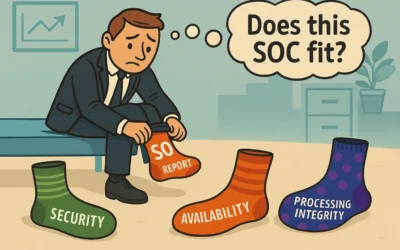Consolidating data centers, increased business agility and reduced IT system costs are a few of the benefits associated with migrating to the cloud. Add to these improved security and it makes a compelling case for cloud migration. As part of the digital transformation process, companies may implement what they consider the best tools, and have the right people and policies in place to secure their working environment. But is it enough?
Technology is continually evolving and so are the ways in which cybercriminals attack. Which means that no system is entirely secure. Every small change or upgrade has the potential to create a vulnerability. In that way, operating in the cloud is not all that different to having on-site systems that need to be tested and defended.
Understanding the most common mistakes made in cloud security can help companies become more aware of where vulnerabilities exist. We highlight the top five we often come across when testing:
Unhardened systems
This is one of the most common issues that comes up as a vulnerability in cloud systems. Normally as part of any on-site data center change or upgrade, there would be a process of removing the unneeded services and applications, then checking and patching the system to ensure it’s the latest version to reduce the number of vulnerabilities. But when new systems are set up in the cloud, often some of these steps are skipped. It could simply be a case of them being exposed to other networks or the internet before they’re hardened. More often though, they’re simply overlooked, and this creates vulnerabilities.
Excessively exposed services
Frequently vulnerabilities occur through remote desktop protocols, SSH, open files shares, database listeners, and missing ACL’s or firewalls. Usually these points of access would be shielded by a VPN, but now they’re being exposed to the internet. An example of how this could happen is through default accounts and passwords. If during setup these defaults weren’t removed or secured and SSH or databases are inadvertently exposed to the internet, it opens up a pathway for an attacker to access the system through the default logins and passwords.
Insecure API’s
While this is often seen in on-site systems, it is more prevalent in cloud systems. Perhaps because there seems to be less vigilance when migrating to the cloud. Weak authentication is a concern, and also easy authentication bypasses where an attacker is able to skip authentication altogether and start initiating queries to find vulnerabilities within a system.
Missing critical controls
Basic system controls such as firewalls, VPN, and two factor authentication need to be in place as a first line of defense. Many cloud servers have their own firewalls which are more than adequate, but they need to be activated and visible. Another common vulnerability can exist in a hybrid on-site cloud system that is connected by a S2S VPN. A vulnerability in the cloud system could give an attacker access to the on-site system through that supposedly secure link.
Insufficient logging and lack of monitoring
When a cloud server has been compromised, the first thing that is asked from the affected company, is the logs showing access, firewalls and possible threats to the different systems hosted within the cloud. If these logs don’t exist or haven’t been properly set up, it makes it almost impossible to monitor and identify where the attacks originated or how they progressed through the system.
Identifying cloud vulnerabilities through penetration testing
While there is a big movement towards cloud servers, many companies don’t give the same level of consideration to securing their systems in the cloud as they have for years on their on-site servers. This is where penetration testing is hugely valuable in that it can identify and report on vulnerabilities and give companies an opportunity to reduce their risk.
The approach of penetration testing on cloud servers is no different from on-site servers because from an attacker’s point of view, they’re interested in what they can access. Where that information is located, makes no difference. They’re looking for vulnerabilities to exploit. There are some areas in the cloud where new vulnerabilities have been identified, such as sub-domain takeovers, open AWS S3 buckets, or even open file shares that give internet access to private networks. Authentication systems are also common targets. Penetration testing aims to make vulnerabilities known so that they can be corrected to reduce the risk a company is exposed to.
For companies that want to ensure they’re staying ahead of vulnerabilities, adversary simulations provide an opportunity to collaborate with penetration testers and validate their controls. The simulation process demonstrates likely or common attacks and gives defenders an opportunity to test their ability to identify and respond to the threats as they occur. This experience helps train responders and improve system controls. A huge benefit of this collaborative testing approach is sharing of information such as logs and alerts. The penetration tester can see what alerts are being triggered by their actions, while the defenders can see how attacks can evolve. If alerts aren’t being triggered, this identifies that logs aren’t being initiated which can then be corrected and retested.
SynerComm can help
As companies advance in their digital transformation and migrate more systems to the cloud, there needs to be an awareness that risk and vulnerabilities remain. The same level of vigilance taken with on-site systems needs to be implemented alongside cloud migrations. And then the systems need to be tested. If not attackers will gladly find and exploit vulnerabilities and this is not the type of risk companies want to be exposed to.
To learn about Cloud Penetration Testing and Cloud Adversary Simulation services reach out to Synercomm.


